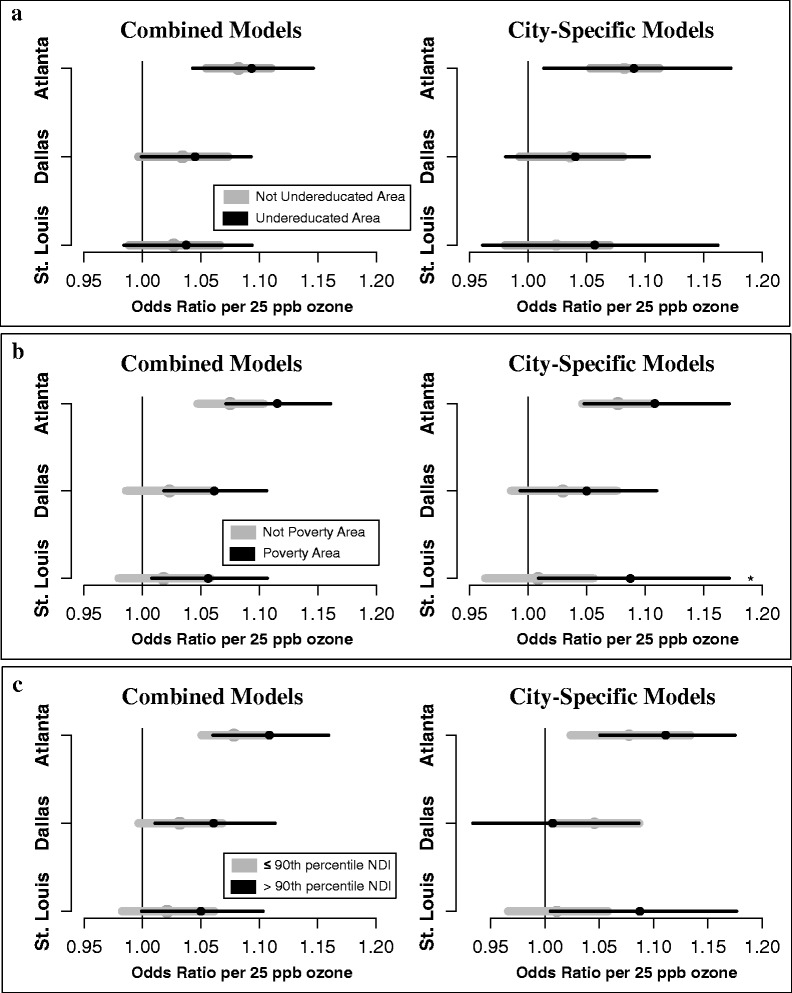Fig. 2.

Effect modification by categorical indicators of neighborhood SES using combined and city-specific models. a: association between ozone and pediatric respiratory ED visits in undereducated areas (low SES) and non-undereducated areas (high SES). b: association between ozone and pediatric respiratory ED visits in poverty areas (low SES) and non-poverty areas (high SES). c: association between ozone and pediatric respiratory ED visits in areas above the 90th percentile of the NDI (low SES) and in areas below the 90th percentile (higher SES). Odds ratios and 95% posterior intervals per 25 ppb ozone are presented. Black points and error bars represent ORs and 95% PIs in low SES areas; gray points and bars represent ORs and 95% PIs in areas of higher SES. Undereducated areas: ≥ 25% the adult population (≥25 years old) with less than a 12th grade education. Poverty area: ≥ 20% households living below the Federal Poverty Line. Abbreviations: ED, Emergency Department; NDI, Neighborhood Deprivation Index; SES, socioeconomic status; ZCTA, Zip Code Tabulation Area
